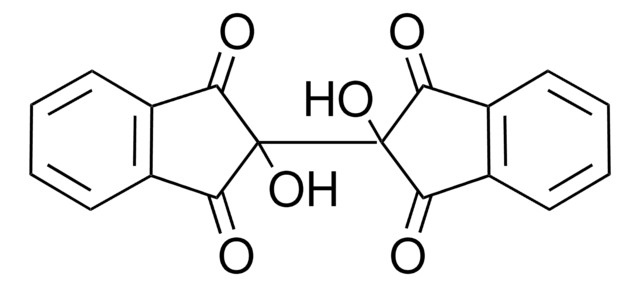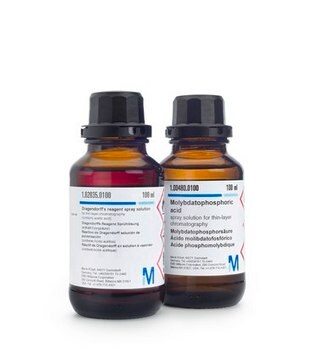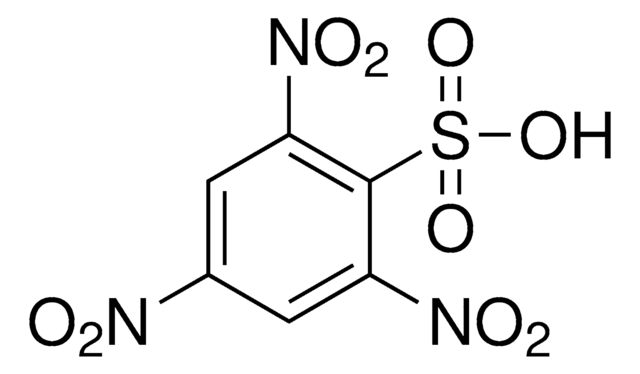151173
Ninhydrine
ACS reagent
Synonyme(s) :
1,2,3-Indanetrione monohydrate, 2,2-Dihydroxy-1,3-indanedione, Trioxohydrindène monohydrate
About This Item
Produits recommandés
Qualité
ACS reagent
Niveau de qualité
Description
identification and melting point passes test
Forme
solid
Couleur
white to brownish white, crystals
Pf
250 °C (dec.) (lit.)
Solubilité
H2O: passes test
Adéquation
passes test for sensitivity to amino acids
Groupe fonctionnel
hydroxyl
ketone
Chaîne SMILES
OC1(O)C(=O)c2ccccc2C1=O
InChI
1S/C9H6O4/c10-7-5-3-1-2-4-6(5)8(11)9(7,12)13/h1-4,12-13H
Clé InChI
FEMOMIGRRWSMCU-UHFFFAOYSA-N
Vous recherchez des produits similaires ? Visite Guide de comparaison des produits
Catégories apparentées
Description générale
It is employed for nitrite detection in various samples, identifying contamination, and is also used as a colorimetric reagent.
Application
Mention d'avertissement
Warning
Mentions de danger
Conseils de prudence
Classification des risques
Acute Tox. 4 Oral - Eye Irrit. 2 - Skin Irrit. 2
Code de la classe de stockage
11 - Combustible Solids
Classe de danger pour l'eau (WGK)
WGK 3
Point d'éclair (°F)
Not applicable
Point d'éclair (°C)
Not applicable
Équipement de protection individuelle
dust mask type N95 (US), Eyeshields, Gloves
Faites votre choix parmi les versions les plus récentes :
Certificats d'analyse (COA)
Vous ne trouvez pas la bonne version ?
Si vous avez besoin d'une version particulière, vous pouvez rechercher un certificat spécifique par le numéro de lot.
Déjà en possession de ce produit ?
Retrouvez la documentation relative aux produits que vous avez récemment achetés dans la Bibliothèque de documents.
Notre équipe de scientifiques dispose d'une expérience dans tous les secteurs de la recherche, notamment en sciences de la vie, science des matériaux, synthèse chimique, chromatographie, analyse et dans de nombreux autres domaines..
Contacter notre Service technique









